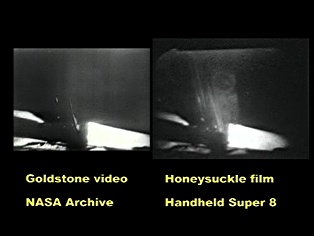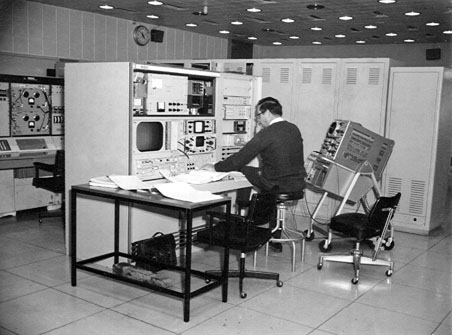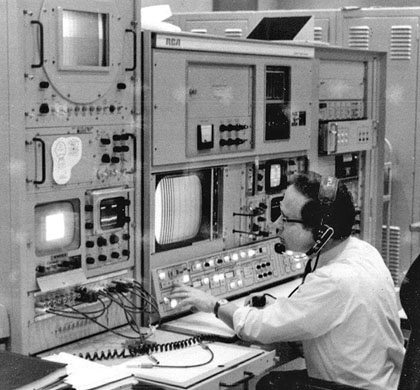
Ed von Renouard's Apollo Super-8 Film
Copyright © 2005 by Colin
Mackellar.
All rights reserved.
Last revised 18 October 2010.



Ed worked at Honeysuckle until just before the Apollo-Soyuz Test Project. Previously he had worked in broadcast television with the Australian Broadcasting Commission.


In order to send me a copy, Ed projected his film onto a screen and used a video camera on a tripod to record the picture onto video tape.
When his tape arrived, I realised that Ed had some unique footage. His film clearly shows Armstrong coming down the ladder - something that was only vaguely visible to the international TV audience. As well, he filmed the PLSS backpacks being dumped down the ladder more than two hours after the EVA ended. (This may be the only existing recording of that event.)
Although Ed only made the film as a personal souvenir, it was clear that it was very important to preserve it as a unique record of that historic day.
Several friends in the Apollo community helped with the finances to have the film professionally transferred to digital media, and ALSJ contributing editor David Woods (who is a BBC Post-Production Editor in Scotland) arranged for an Archive Telecine Specialist (Tim Emblem-English) at the BBC in London, to do the work. Ed hand delivered the film - and also some more film including footage he took during the Apollo 16 and 17 EVAs - and the transfer was made.
The digital files were then sent to David Woods and he was able to reduce the strobing on the Apollo 11 TV footage (caused by the difference in frame rate between the 18 frames per second Super 8 movie camera and the TV monitor). David passed along the files to me in Australia and I have put them into their correct sequence and added the appropriate mission audio for context.
The high quality of the digital transfer shows that parts of this Apollo 11 Super 8 film preserve more detail than was seen in Houston.
In the other footage, I also discovered that Ed recorded about a minute of Apollo 16 television that was seen at Honeysuckle and nowhere else.
A DVD of Ed's footage is being produced and a copy will be given to the NASA History Office. The DVD is being launched at a Honeysuckle Creek reunion in Canberra in March 2006.
| Journal Home Page | Apollo 11 Journal |